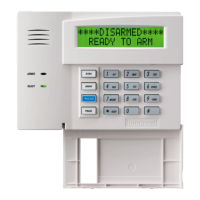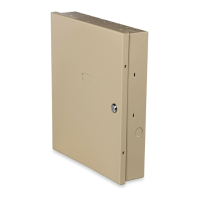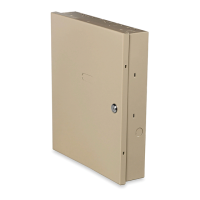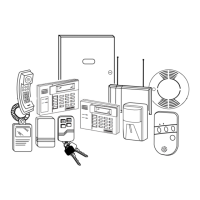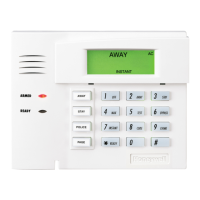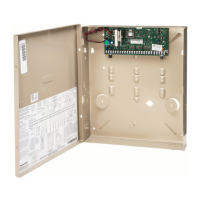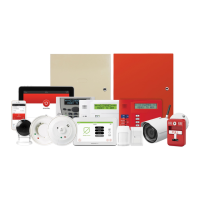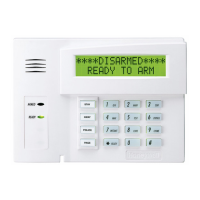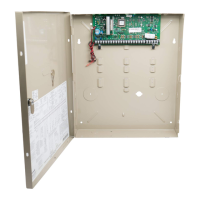
Do you have a question about the Honeywell Ademco VISTA-21iPSIA and is the answer not in the manual?
| Partitions | Up to 2 |
|---|---|
| User Codes | Up to 48 |
| Power Supply | 12VDC |
| System Type | Wired/Wireless |
| Zones | Up to 48 |
| Wireless Zones | Up to 40 |
| Keypads | Wired Keypads |
| Communication | POTS, IP, Cellular |
| IP Communication | Optional, via add-on module |
| Cellular Communication | Optional, via add-on module |
| Transformer | 16.5VAC/40VA |
| Backup Battery | 12VDC, 7Ah |
Overview of the Honeywell security system and its features.
Details on burglary, fire, and security code functions.
Explanation of system zones and partitioning for protection areas.
Procedures for arming, step-arming, and disarming the system.
How alarms are indicated and what happens during an alarm event.
How alarm conditions are stored and displayed.
Using a phone module to access and control the system remotely.
Description of programmable keys A, B, C, D for various functions.
How to use the system for automatic and manual paging.
How to program schedules for automatic system functions.
Instructions for recording and playback of messages on voice keypads.
Overview of keypad features: LCD, sounder, backlighting, and voice capabilities.
Description of keypads with 2-line alphanumeric LCDs for messages.
Description of keypads using pre-designated words on the LCD.
Keypads with voice announcements, chime, and message center features.
Explanation of status messages and indicators on Fixed-Word Keypads.
Diagram of keypad layout and important operational notes.
Detailed explanation of each key's function and secondary uses.
Description of LED indicators, function keys, and speaker.
Time allowed to disarm the system after entering through a designated door.
Time allowed to leave through a designated door after arming the system.
Conditions and messages related to exit errors and recent closings.
How to check for open zones before arming the system.
Using voice keypads to announce system status and faulted zones.
Arms perimeter zones, with entry delay.
Arms perimeter and selected interior zones, with entry delay.
Arms perimeter zones, entry delay off.
Arms entire system, with entry delay.
Arms entire system, entry delay off.
Key sequences for arming the system in different modes.
Using programmed function keys for single-button arming.
Using a key to cycle through arming modes.
How to arm and disarm the system using a keyswitch.
How to disarm the system and silence alarms.
How to bypass specific zones before arming.
Automatically bypassing all open (faulted) zones.
Alerting to door/window openings while disarmed.
Voice announcements for door/window openings.
How to display the system's current date and time.
Procedure for setting the system's date and time.
How to activate silent, audible, or fire alarms.
Using keys A, B, C, D to automate command sequences.
Step-by-step guide to programming a macro sequence.
Controlling connected devices like lights via keypad commands.
How the system sends status codes to pagers.
Manually sending messages to pagers.
Paging for missed check-ins or events.
Assigning and using security codes for user access.
Explanation of different user authority levels.
Command strings for programming user codes and attributes.
Overview of multi-partition systems and keypad display.
Switching keypad display between partitions.
Arming multiple partitions simultaneously.
How the common zone functions with multiple partitions.
Procedure for setting up automated events and schedules.
System events recorded in a history log.
How to access and navigate the system event log.
Procedure for conducting weekly system tests.
Interpreting 'CHECK' and 'BAT' messages on the keypad.
Trouble messages like COMM. FAILURE, SYSTEM LO BAT, etc.
What to do when there is no keypad display.
Troubleshooting issues with telephone lines.
Basic maintenance: system testing and sensor checks.
How to silence low battery tones and what they mean.
Guidance on replacing batteries for wireless devices.
How fire alarms are indicated and sound.
Procedure to silence fire alarms and clear the display.
How to trigger a fire alarm manually using panic keys.
NFPA guidelines for placement and number of smoke detectors.
Recommended steps for fire escape planning and execution.
Checking zones, quick arming, bypassing zones, and quick bypass.
Silencing alarms, clearing memory, and disarming the system.
Duress, panic alarms, chime mode, test mode, and phone access.
Table of sounds and displays for Fixed-Word keypads.
Table of sounds and displays for Alpha keypads.
Radio Frequency Emissions and compliance statements.
Log for recording system features like exit/entry delays and arming modes.
Chart for tracking system users, codes, and attributes.
Configuration for pager phone numbers and reporting events.
Log for programming and tracking automated system schedules.
Reference for device numbers used in schedules and function keys.
Form for homeowner's insurance premium credit application.
Checklist for placement of smoke detectors.
Checklist for placement of burglary detection devices.
Details on system capabilities, failure points, and user responsibilities.
Honeywell's limited warranty for security equipment.
